In today’s world of EVs and bleeding-edge driver aids, it’s next to impossible for automakers to keep things old-school.
While we’re advocates of a communicative steering feel and feedback, the industry is well on its way to adopting electric power-assisted systems.
Statistically, most cars on the road have electric power-assisted steering, which means hydraulic systems are a dying breed.
Barring a handful of high-end sports car marques, the rest of the world has moved on to electrically-assisted steering systems.
The real question is, is electric power steering better than its hydraulic counterpart? Or is it the other way around? Should we embrace the change?
In this article, we take an in-depth look at two of the most popular power steering systems and weigh their pros and cons.
Regardless of our first choice though, one thing’s certain — both systems are Eons ahead of analog steering racks.
What Is Power Steering?

A steering system that assists the driver in turning the wheels is called power steering. In other words, any form of assisted steering can be called power steering.
The most commonly used power steering types include:
- Electric power-assisted steering (EPAS)
- Electro-hydraulic power steering (EHPS)
- Hydraulic power-assisted steering (HPAS)
Almost all cars today have some form of power-assisted steering, but that wasn’t always the case. You might recall the days of manual steering in classic cars and the difficulties it posed when parking or maneuvering in a tight space.
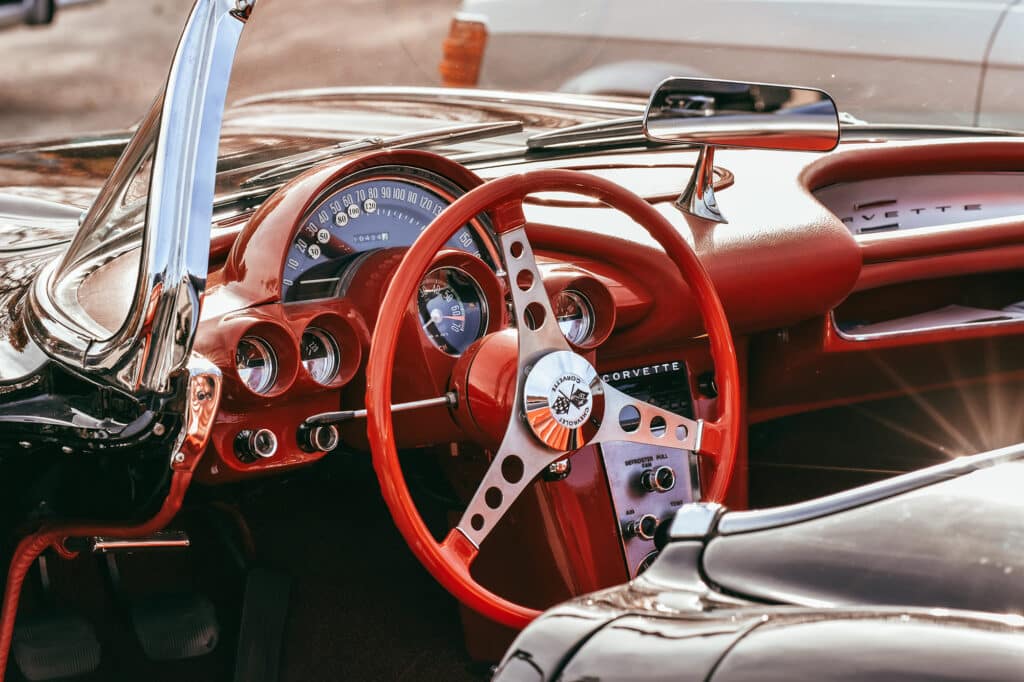
The effort was noticeably more on front-engine cars, as they tend to weigh more at the front, making it difficult to turn the wheels.
That doesn’t necessarily mean rear-engine or snap oversteer prone rear-mid-engine cars of the time were super-easy to maneuver, especially at city speeds.
Just watch one of the many videos of Countach owners struggling to park their exotic supercar and you’ll know what we’re on about.
In essence, a power steering system makes living with a car a lot easier. You get more control over the steering without putting in a lot of effort.
How Does a Steering System Work?
Before we dive into the power steering types, it’s important you understand how a steering system works.

We’ll keep it short, but the emphasis here is on familiarizing yourself with the components inside a non-power-assisted steering system.
Let’s start with the steering column. At its base sits a pinion gear, which connects to a rack — think of it as a straight row of gear teeth.
As you turn the steering wheel, the column rotates the pinion gear, allowing the rack to move from side to side. The ends of the rack are connected to the wheels via tie rods, completing the steering process.
This should give you a basic understanding of a car’s steering system. Now let’s take a look at how a hydraulic system works.
Introduction to Hydraulic Power Steering
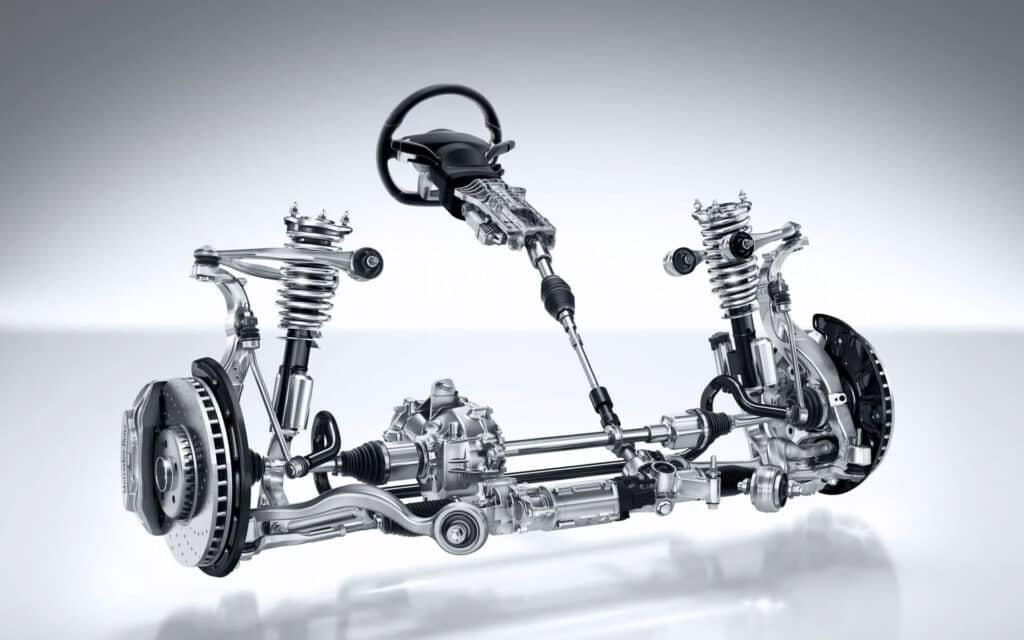
A hydraulic power steering system functions similarly, except you’ll notice the addition of a few extra parts, namely:
- Hydraulic fluid reservoir
- Hydraulic piston
- Hydraulic pressure/return lines
- Hydraulic pump
- Rack housing/hydraulic chamber
- Rotary valve
A hydraulic power steering system uses fluid pressure to assist the driver in the steering process.
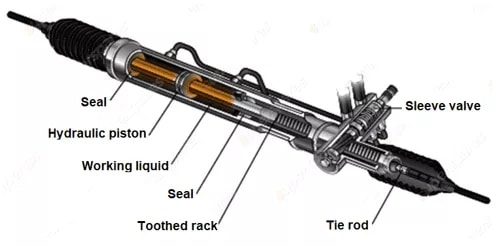
It essentially takes away the extra effort required to steer the wheels. In an HPAS system, the necessary fluid pressure is supplied via a belt-driven steering pump that runs off the engine.
Inside the steering rack assembly is the rotary valve. Based on steering inputs, high-pressure fluid is supplied to the hydraulic chamber via the rotary valve. The piston separates the hydraulic chamber into two equal parts.
When hydraulic fluid enters the housing, a pressure differential arises, pushing the piston, and effectively moving the rack.
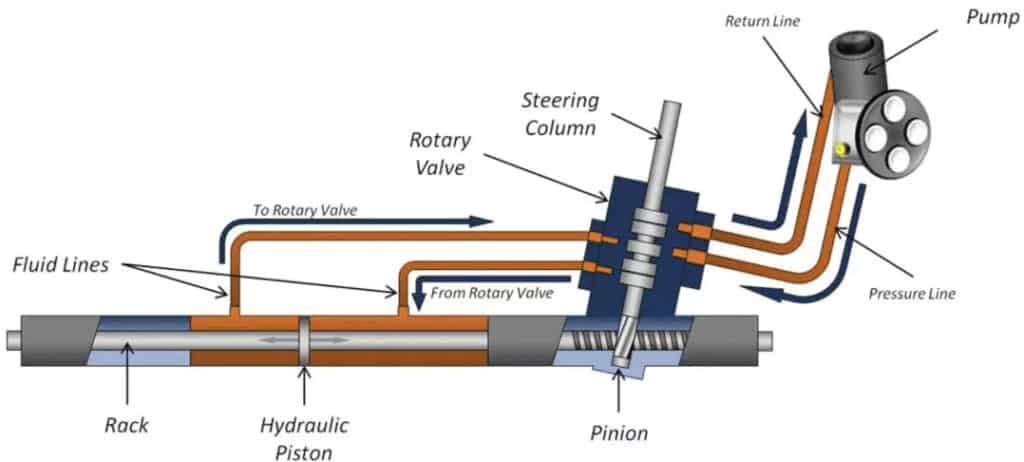
A torsion bar, which acts as a torque sensor of sorts, determines how much torque the driver exerts on the steering wheel and accordingly supplies the hydraulic fluid into the chamber.
The greater the torque on the wheel, the greater the fluid supply, ergo, more steering assistance.
An electro-hydraulic system ditches the mechanically driven steering pump in favor of an electrical pump. This takes away many of the complexities and inherent drawbacks of a non-hybrid hydraulically-assisted steering system.
So what is electric power steering? How does it work?
How Does Electronic Power Steering Work?

Electric power steering utilizes an electric motor to facilitate the required steering assistance. It frees up space inside the engine bay by completely taking away the hydraulic circuit. Instead, it uses the following components:
- Coupling between motor and rack
- Electric motor
- Rotational angle sensor
- Steering torque sensor
In an EPAS system, however, sensors determine the torque and position of the steering wheel and relay the information to the ECU.
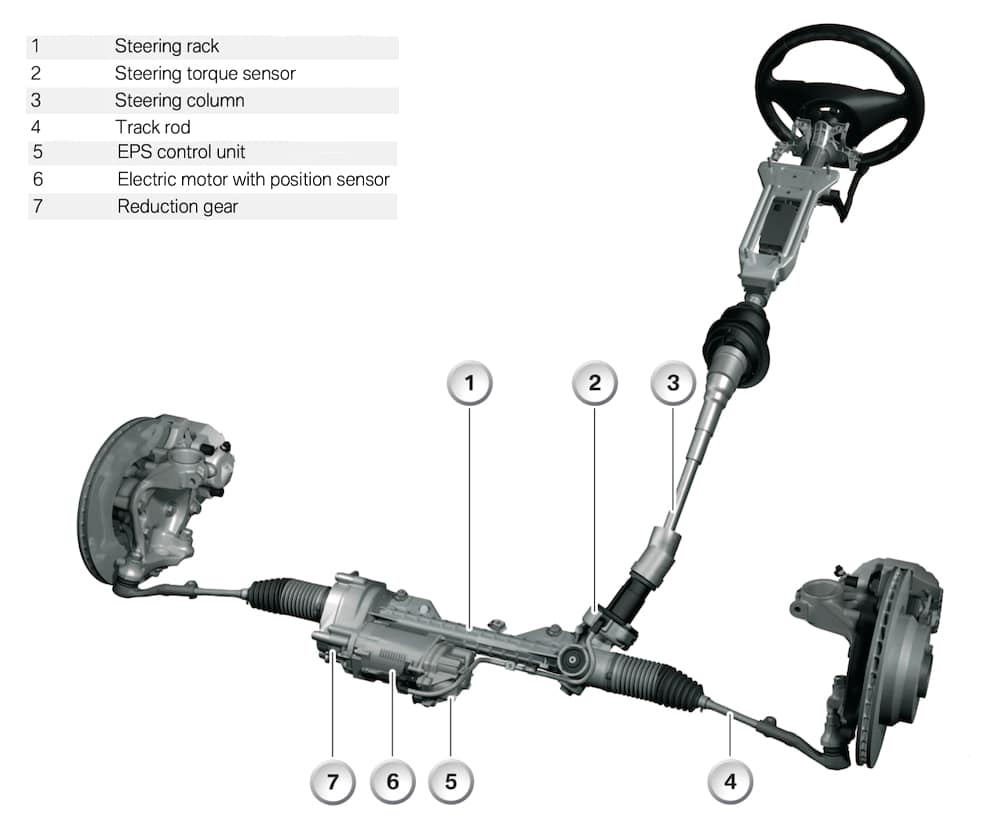
Much like hydraulic and non-assisted steering systems, electric units also carry over the pinion and rack mechanical linkage.
This is done as a fail-safe so that in the event of a power steering malfunction, the driver can still control the steering inputs, albeit without any assistance.
Electric Power Steering vs Hydraulic Steering

When it comes to comparing hydraulic vs electric steering systems, electric power steering triumphs over hydraulic systems in almost every metric.
An EPAS system is relatively less complex, has fewer moving parts, and has no risk of fluid leaks. That’s because electric power steering doesn’t have or need fluid.
Additionally, an electric power steering system is lighter and has fewer points of failure, making it easier to fix.
It’s better for gas mileage too. Since there is no mechanical pump sapping power from the engine, an EPAS unit is far more efficient than an HPAS system.

Employing an EPAS system has also allowed OEMs to incorporate advanced driver assistance technologies such as lane departure and lane-centering into the vehicle.
Another highlight of electric steering is programmable drive modes. This unlocks variable steering assist (not to be confused with variable steering ratios).
Unlike variable-ratio steering, variable power steering alters assist by varying the torque supplied and not through different steering ratios.
However, the one significant advantage of hydraulic steering is feel and feedback. Many purists agree that HPAS systems offer more connection and driver involvement. That said, not everyone owns tuner cars and sports cars.

The vast majority of cars can make do without HPAS. Moreover, it’s worth pointing out that Porsche’s electric steering is almost as good as any hydraulic unit, save for perhaps the feel. But it won’t be long before that’s taken care of.
Electric power steering is better in every measurable way than a hydraulic unit, especially in mass-market runabouts.
But if you want your car to feel like an extension of your body, HPAS is the way to go; maybe throw in an aftermarket steering wheel in the mix to make things more exciting.
Are you pro-EPAS or is HPAS the one to have? Let us know in the comment section below.
If you find this article informative, share it with a friend! We appreciate your support.

